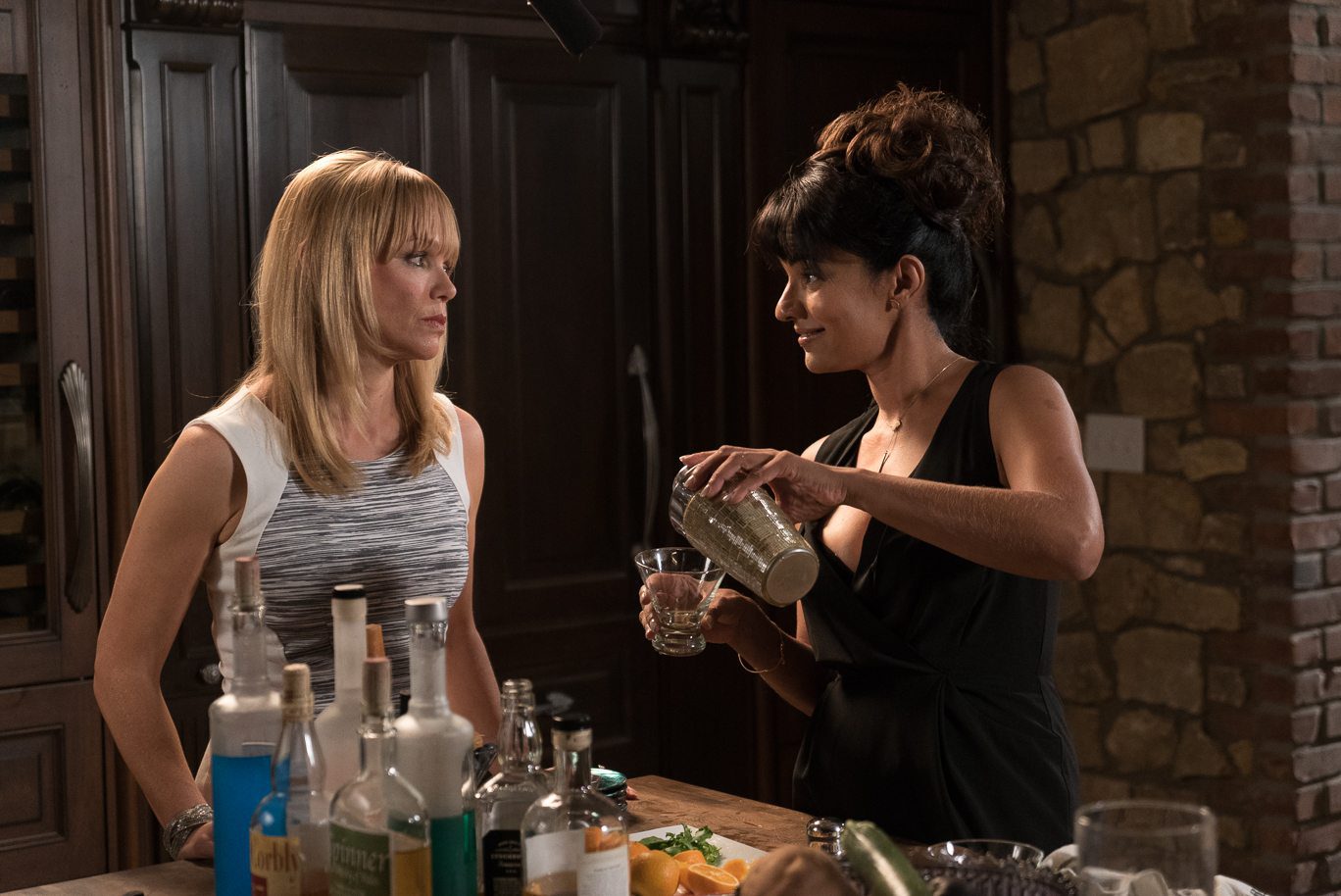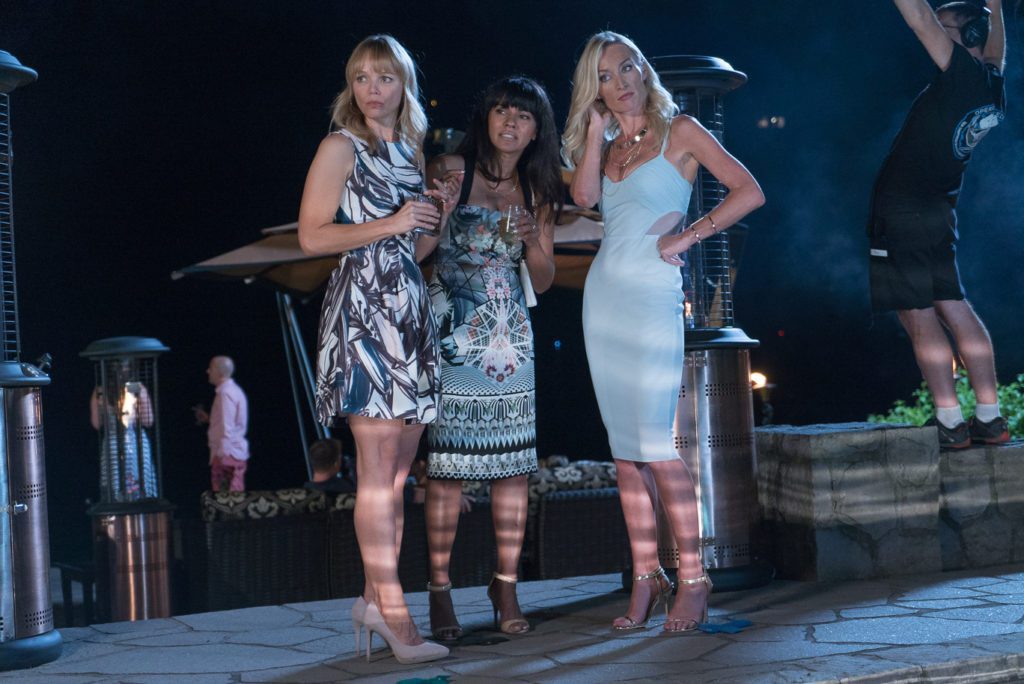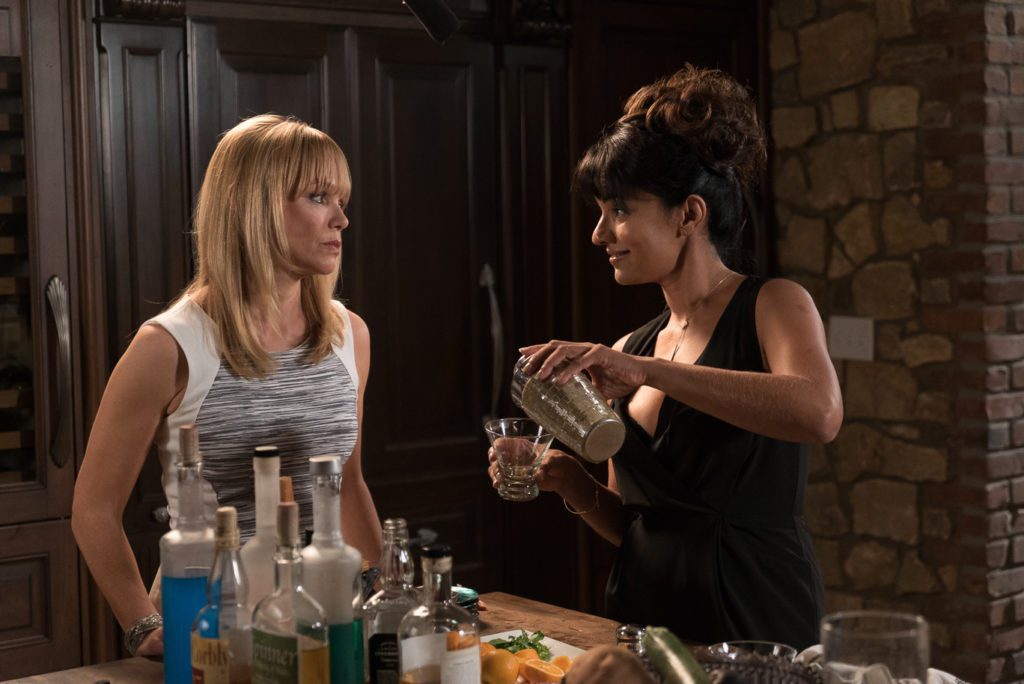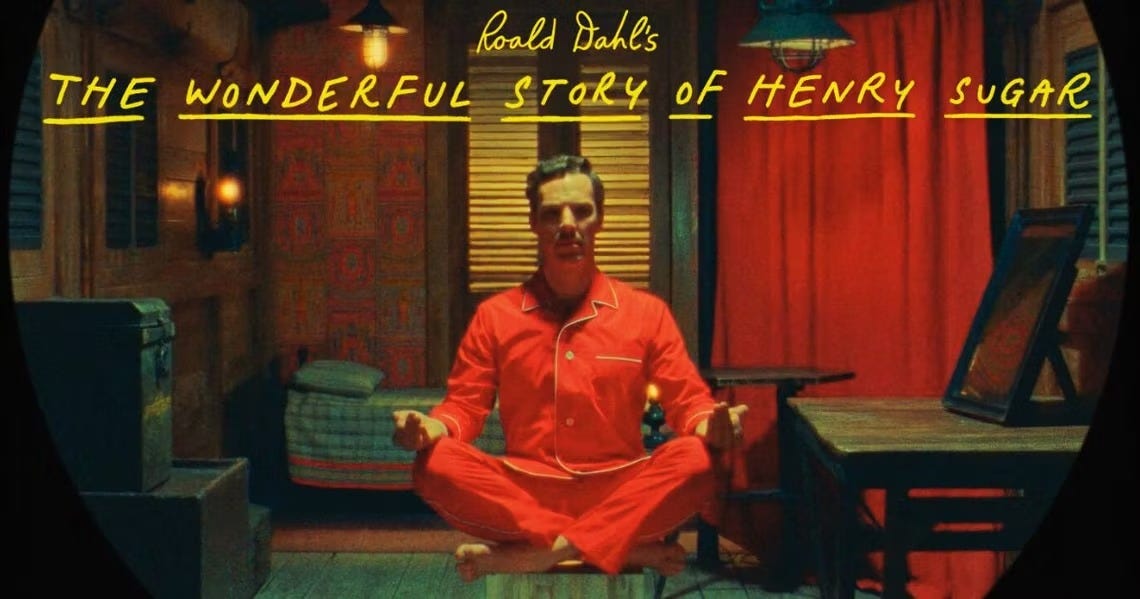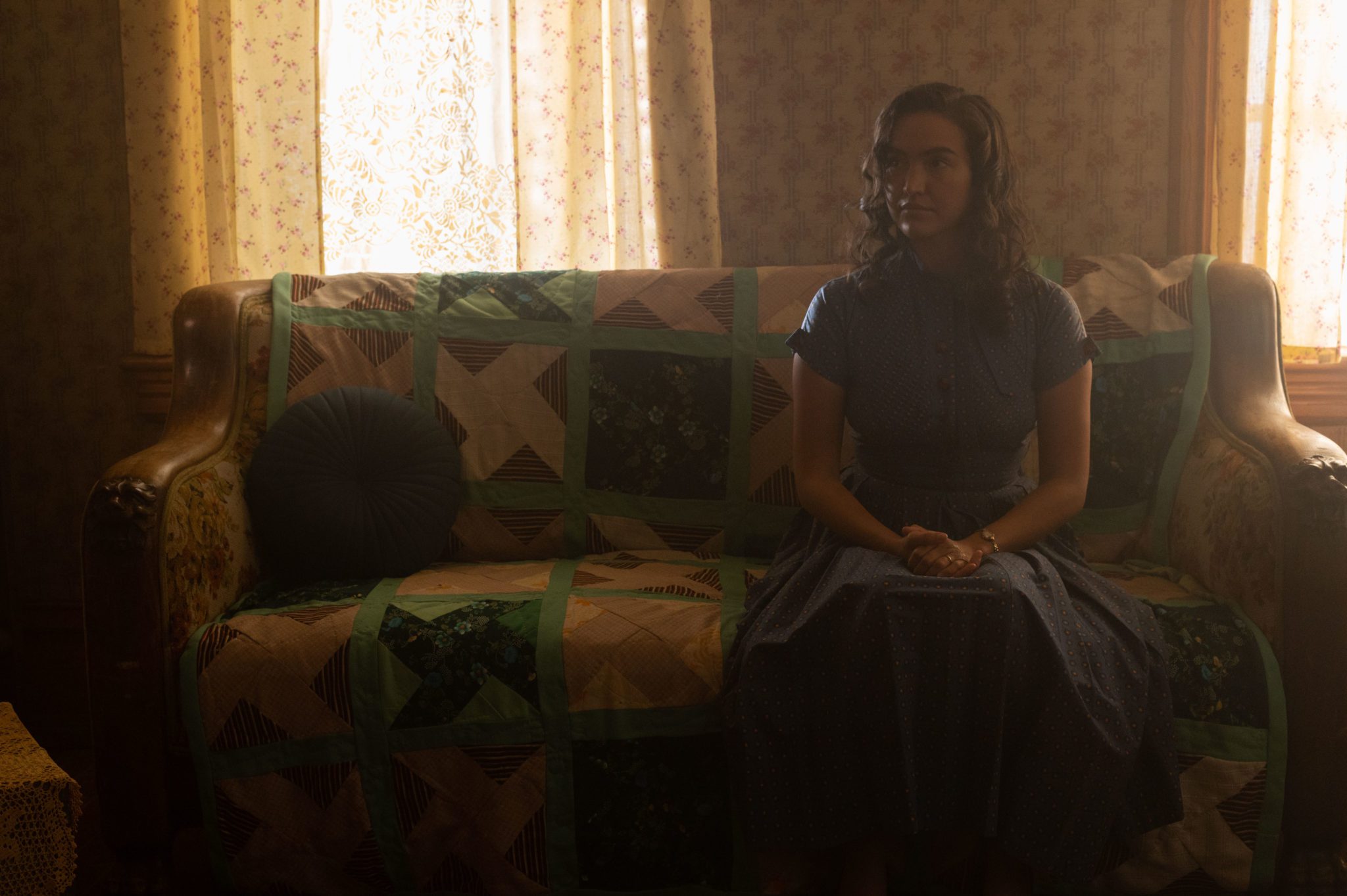?How do you survive the pressure to fit in??
In Best Fake Friends, Joy (Lauren Bowles) has just moved into a tony Portland suburb after her husband has landed a dream job. Without friends, she is growing a bit lonely when she is invited to a neighborhood party. At the party she meets Nikki (Victoria Smurfit), Tory (Suleka Mathew), and Rachel (Michelle Arthur), who tell her about the various ?tribes? of neighborhood housewives. They declare that they are the ?fun? group. And they are fun. However, under Nikki?s lead (she is clearly the Alpha of the group), Joy is being asked to do more and more things outside her comfort zone. Soon she is in a world built on distrust (especially distrusting of husbands), drugs, and destructive behavior.
Early in the film, Joy reflects on the fa?ades of the houses in the neighborhood. Very beautiful and impressive, yet hiding the emptiness of the inside. That is the operative metaphor for the women she is meeting?Nikki especially. They compare the plastic surgery they?ve had done (and try to convince Joy she can?t keep her husband without it). They go off for a wild weekend in Las Vegas (a city that many see as nothing but fa?ade). And the big event of the neighborhood is a masquerade. Joy is trying to maintain her authenticity, but it is difficult with the peer pressure of this group.
Nikki serves the role of villain. She is the most physically beautiful one of the crowd, but also the most insecure. She counters that insecurity by being manipulative and pushing others to take part in various morally questionable activities with her?making each feel special for being close to her. But there is a cost to being Nikki?s friend. Each step of the way makes the others a little more like her?and being more about the fa?ade than about the interior.
If Best Fake Friends were set in middle school, it would be called a coming-of-age comedy that points out the dangers of falling in with the wrong crowd. But being set among adult women it loses much of the comedic aspect and becomes a story of a desperate attempt at finding validation in the eyes of others. After watching I realized that this could very well have been told as the coming of age story. Then we would look at the characters and understand that part of their problems could be explained away because of immaturity. But with an adult cast and adult situations, that excuse is taken away. What is left is a revelation that behind the fa?ade of beauty and wealth there may lie a pathetic emptiness that some may try to fill by ultimately destructive means. It is only, as Joy learns (and we try to teach children), by being true to oneself that life opens to happiness.

